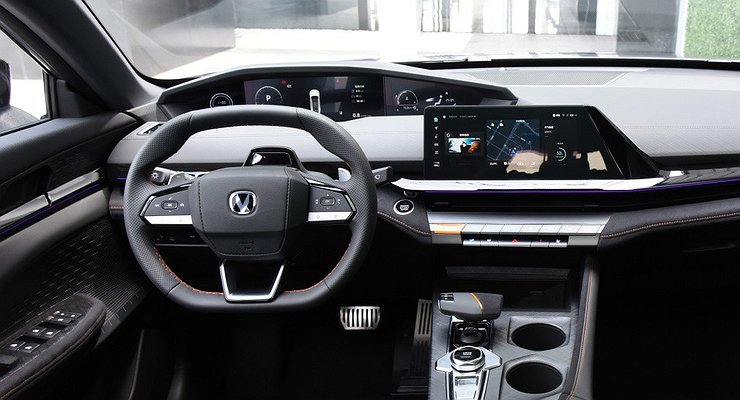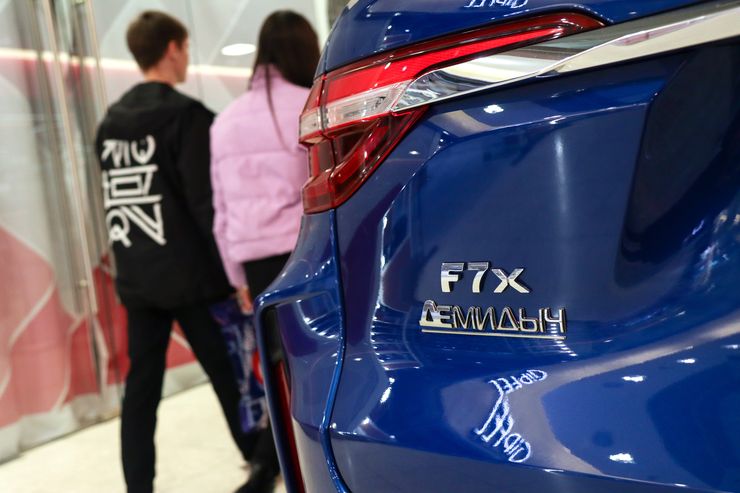5 most stupid constructive “blunders” of Chinese crossovers
- December 8, 2022
- 0
Passenger cars from the Celestial Empire have long ceased to be second-class cars for Russians. However, even the most expensive of them still cannot get rid of annoying
Passenger cars from the Celestial Empire have long ceased to be second-class cars for Russians. However, even the most expensive of them still cannot get rid of annoying

The most glaring nuisance that many Chinese brands are now “sick” is the general frenzy on all sorts of touchscreens and touch panels. They are beautiful and technical. But in the winter it suddenly turns out: the touch button for switching on seat heating, windscreen, steering wheel is not the smartest solution. As well as the management of the “climate” via the touch screen. Because in the cold all these “hit-something-there” don’t work and require warming up themselves first. Conclusion: all controls for the “warm” options of cars for the Russian market should be made in the form of physical buttons and “twists”.
The second in a row, but perhaps the first in terms of inconvenience, is the Chinese “blunder” – too small an adjustment range of the steering wheel for reach. Many “Chinese” here want to add at least 5-7 centimeters more! This is not so much, not very difficult to implement constructively and costs a penny in production. But it allows you to comfortably get behind the wheel not only for a low average resident of China, but also for a normal Russian citizen over 170 cm tall.
But let’s move on. At one time, a Chinese innovator decided that it was possible to combine the button for switching on the electric heating of the windshield with the button for starting the maximum airflow. Apparently, the genius believed that the latter is necessary only when thawing the “frontal”. “Improve” unfortunately turned out to be contagious. We explain: when the driver wants to remove the ice crust on the glass, it is not necessary to blow it with cold air from the inside.
And if in the summer the fan is turned on “at full power” to prevent fogging of the glass, then the operation of electric “heaters” is not required! Therefore, each of these functions needs its own button. Don’t try to save on it!
Another claim to the “Chinese” is the restless attempts of their creators to show off in the field of design. Sometimes it turns out not only funny, but also uncomfortable. Therefore, many car manufacturers have long made the steering wheels of their cars “with a bevel” at the bottom. For the convenience of landing and taxiing: the driver immediately understands in which position the wheels are straight – when the “bevel” is in the lower position. And on some Chinese crossovers, for the sake of beauty and so that “not like everyone else”, the steering wheel is made with two bevels: not only from below, but also from above. When the car has “wheels straight”, you can’t understand it visually.
Well, the suspension “only for ideal roads” is generally a “congenital disease” of the vast majority of the “Chinese”. It is rare that one of these crossovers can boast of handling, energy-intensive suspensions and steering clarity, at least at the level of an average “Korean”. Despite the fact that Korean cars are far from a role model in this sense.
In summary, let’s say: when Chinese automakers overcome the “styles” mentioned above, it will be possible to fully say that “China” has become no worse than other Asian auto brands.

The most glaring nuisance that many Chinese brands are now “sick” is the general frenzy on all sorts of touchscreens and touch panels. They are beautiful and technical. But in the winter it suddenly turns out: the touch button for switching on seat heating, windshield, steering wheel is not the smartest solution. As well as the management of the “climate” via the touch screen. Because in the cold all these “hit-something-there” don’t work and require warming up themselves first. Conclusion: all controls for the “warm” options of cars for the Russian market should be made in the form of physical buttons and “twists”.
The second in a row, but perhaps the first in terms of inconvenience, is the Chinese “blunder” – too small an adjustment range of the steering wheel for reach. Many “Chinese” here want to add at least 5-7 centimeters more! This is not so much, not very difficult to implement constructively and costs a penny in production. But it allows you to comfortably get behind the wheel not only for a low average resident of China, but also for a normal Russian citizen over 170 cm tall.
But let’s move on. At one time, a Chinese innovator decided that it was possible to combine the button for switching on the electric heating of the windshield with the button for starting the maximum airflow. Apparently, the genius believed that the latter is necessary only when thawing the “frontal”. “Improve” unfortunately turned out to be contagious. We explain: when the driver wants to remove the ice crust on the glass, it is not necessary to blow it with cold air from the inside.
And if in the summer the fan is turned on “at full power” to prevent fogging of the glass, then the operation of electric “heaters” is not required! Therefore, each of these functions needs its own button. Don’t try to save on it!
Another claim to the “Chinese” is the restless attempts of their creators to show off in the field of design. Sometimes it turns out not only funny, but also uncomfortable. Therefore, many car manufacturers have long made the steering wheels of their cars “with a bevel” at the bottom. For the convenience of landing and taxiing: the driver immediately understands in which position the wheels are straight – when the “bevel” is in the lower position. And on some Chinese crossovers, for the sake of beauty and so that “not like everyone else”, the steering wheel is made with two bevels: not only from below, but also from above. When the car has “wheels straight”, you can’t understand it visually.
Well, the suspension “only for ideal roads” is generally a “congenital disease” of the vast majority of “Chinese”. It is rare that one of these crossovers can boast of handling, energy-intensive suspensions and steering clarity, at least at the level of an average “Korean”. Despite the fact that Korean cars are far from a role model in this sense.
In summary, let’s say: when Chinese automakers overcome the “styles” mentioned above, it will be possible to fully say that “China” has become no worse than other Asian auto brands.
Source: Avto Vzglyad
Donald Salinas is an experienced automobile journalist and writer for Div Bracket. He brings his readers the latest news and developments from the world of automobiles, offering a unique and knowledgeable perspective on the latest trends and innovations in the automotive industry.